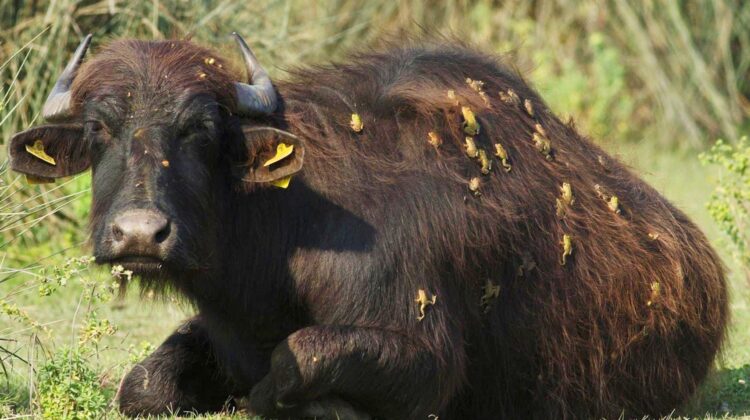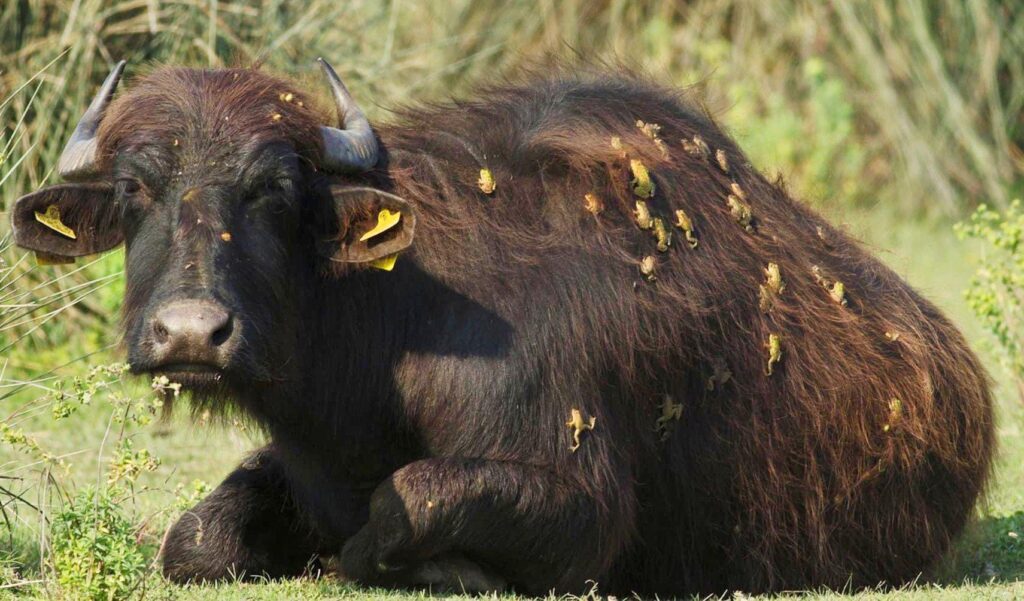
It is the first time this type of mutually beneficial relationship between large mammals and amphibians has been recorded.

According to a new scientific discovery, water buffaloes wallowing in wetlands in northern Turkey are carrying some unlikely passengers on their backs – tiny frogs. The findings were published in the open-access journal Acta Herpetologica.
The buffalo-riding amphibians – named Pelophylax ridibundus – were found by the scientists in the Kizilirmak Delta along the coast of the Black Sea, a region with freshwater and brackish lakes, and plentiful marsh vegetation alongside farmlands and pastures, Live Science reports.
Not surprisingly, locals have found ways to make use of those marshes. From April to November, domesticated Anatolian water buffaloes (Bubalus bubalis) are released from their pastures to roam freely in them, and when they do, they collect frog hitchhikers that forage on the buffaloes’ shaggy bodies for flies. We have long known that some birds play a similar role with some mammals, but this is the first time this type of mutually beneficial relationship between large mammals and amphibians has been identified by scientists.

In the natural world, there are many examples of this strategy – it is known as mutualism, whereby two species interact for their mutual benefit. Here, for example, you can read about a giant tarantula keeping a tiny frog as pet. What’s the deal? Well, the tarantula protects the frog from predators, while also providing it with a food source from the insects feeding on the remains of its prey. In return, the frog’s foraging protects the tarantula’s eggs from ants. As simple as that.
We are seeing something similar here. The study authors observed this behavior between the frogs and the buffaloes on 12 occasions over a week in October 2012, recording 10 instances of individual buffaloes that were festooned with frogs, most of which were actively foraging. Some frog-carrying buffaloes were standing and some were lying down, with the frogs gobbling flies from across the big animals’ backs, and some even squatting on their heads.

As you have probably guessed by now, for the frogs the benefit of taking up temporary residence on the buffaloes’ backs is fly-catching. But the small amphibians could also benefit from the body heat of the large mammals, likely warming up the frogs when air temperatures are cooler.
As many as seven buffaloes hosted fly-eating frogs on their backs simultaneously, the scientists noted. One buffalo carried as many as 27 frogs and another carried 19 frogs – though the average number of frogs per buffalo was less, somewhere between two and five. According to the study authors, the frogs foraged “in a similar manner as birds on large mammals.”
Interestingly, the frogs only exhibit this behavior in the fall, as additional observations have confirmed. The reason could be that their population density is higher during this time of the year, leading to greater competition for food.
A competition that results in this amazing phenomenon.

Leave a Reply